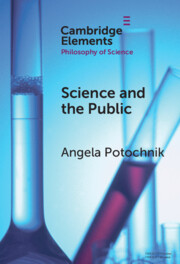
Science is a product of society: in its funding, its participation, and its application. This Element explores the relationship between science and the public with resources from philosophy of science. Chapter 1 defines the questions about science's relationship to the public and outlines science's obligation to the public. Chapter 2 considers the Vienna Circle as a case study in how science, philosophy, and the public can relate very differently than they do at present. Chapter 3 examines how public understanding of science can have a variety of different goals and introduces philosophical discussions of scientific understanding as a resource. Chapter 4 addresses public trust in science, including responding to science denial. Chapter 5 considers how expanded participation in science can contribute to public trust of science. Finally, Chapter 6 casts light on how science might discharge its obligations to the public.
Science and the Public
Published online by Cambridge University Press: 23 March 2024
